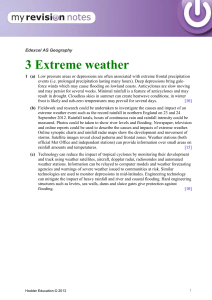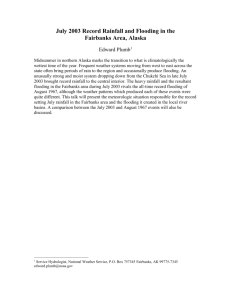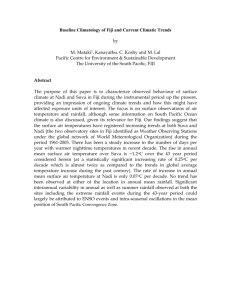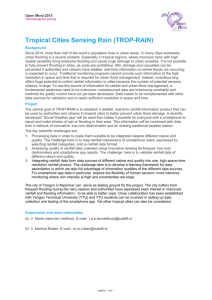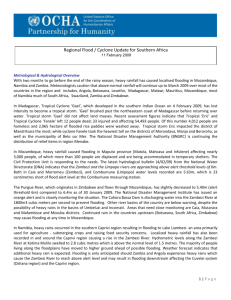Vulnerability of a Coastal Township to Flooding Associated with
advertisement
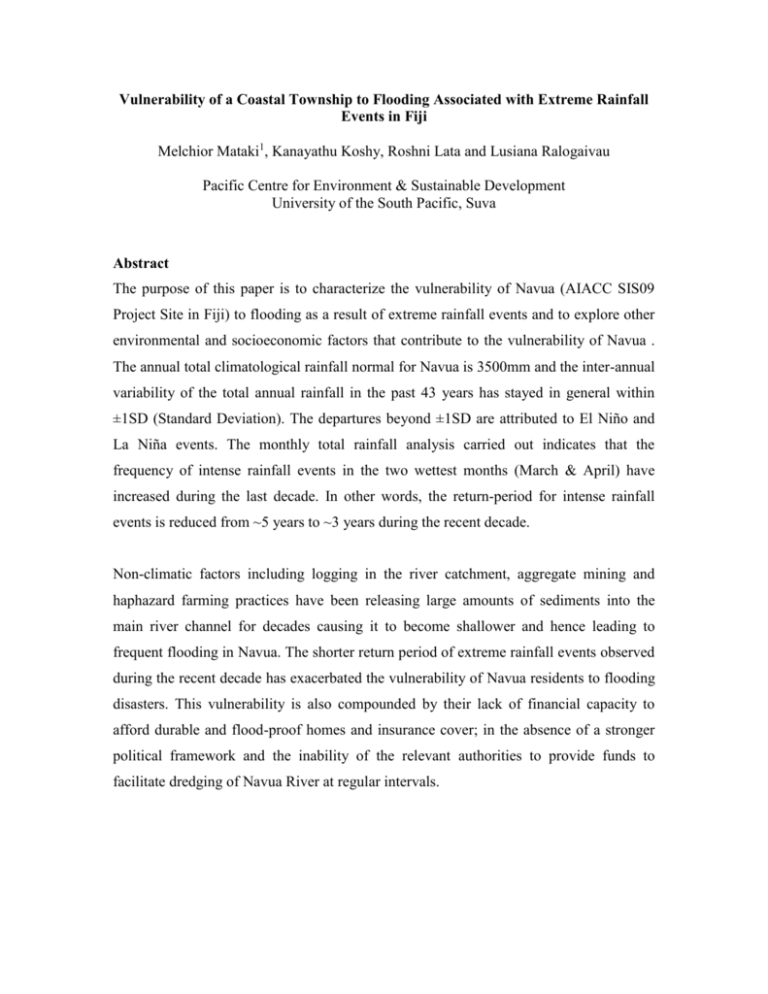
Vulnerability of a Coastal Township to Flooding Associated with Extreme Rainfall Events in Fiji Melchior Mataki1, Kanayathu Koshy, Roshni Lata and Lusiana Ralogaivau Pacific Centre for Environment & Sustainable Development University of the South Pacific, Suva Abstract The purpose of this paper is to characterize the vulnerability of Navua (AIACC SIS09 Project Site in Fiji) to flooding as a result of extreme rainfall events and to explore other environmental and socioeconomic factors that contribute to the vulnerability of Navua . The annual total climatological rainfall normal for Navua is 3500mm and the inter-annual variability of the total annual rainfall in the past 43 years has stayed in general within ±1SD (Standard Deviation). The departures beyond ±1SD are attributed to El Niño and La Niña events. The monthly total rainfall analysis carried out indicates that the frequency of intense rainfall events in the two wettest months (March & April) have increased during the last decade. In other words, the return-period for intense rainfall events is reduced from ~5 years to ~3 years during the recent decade. Non-climatic factors including logging in the river catchment, aggregate mining and haphazard farming practices have been releasing large amounts of sediments into the main river channel for decades causing it to become shallower and hence leading to frequent flooding in Navua. The shorter return period of extreme rainfall events observed during the recent decade has exacerbated the vulnerability of Navua residents to flooding disasters. This vulnerability is also compounded by their lack of financial capacity to afford durable and flood-proof homes and insurance cover; in the absence of a stronger political framework and the inability of the relevant authorities to provide funds to facilitate dredging of Navua River at regular intervals.
